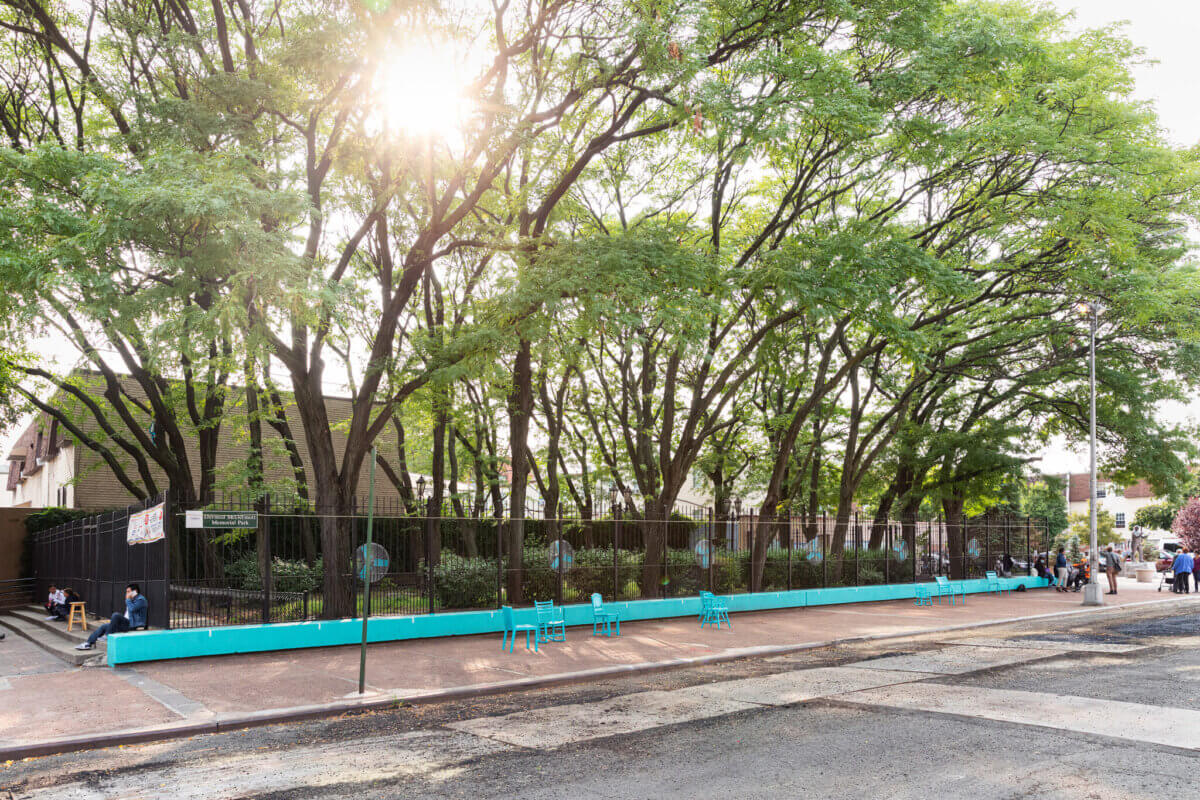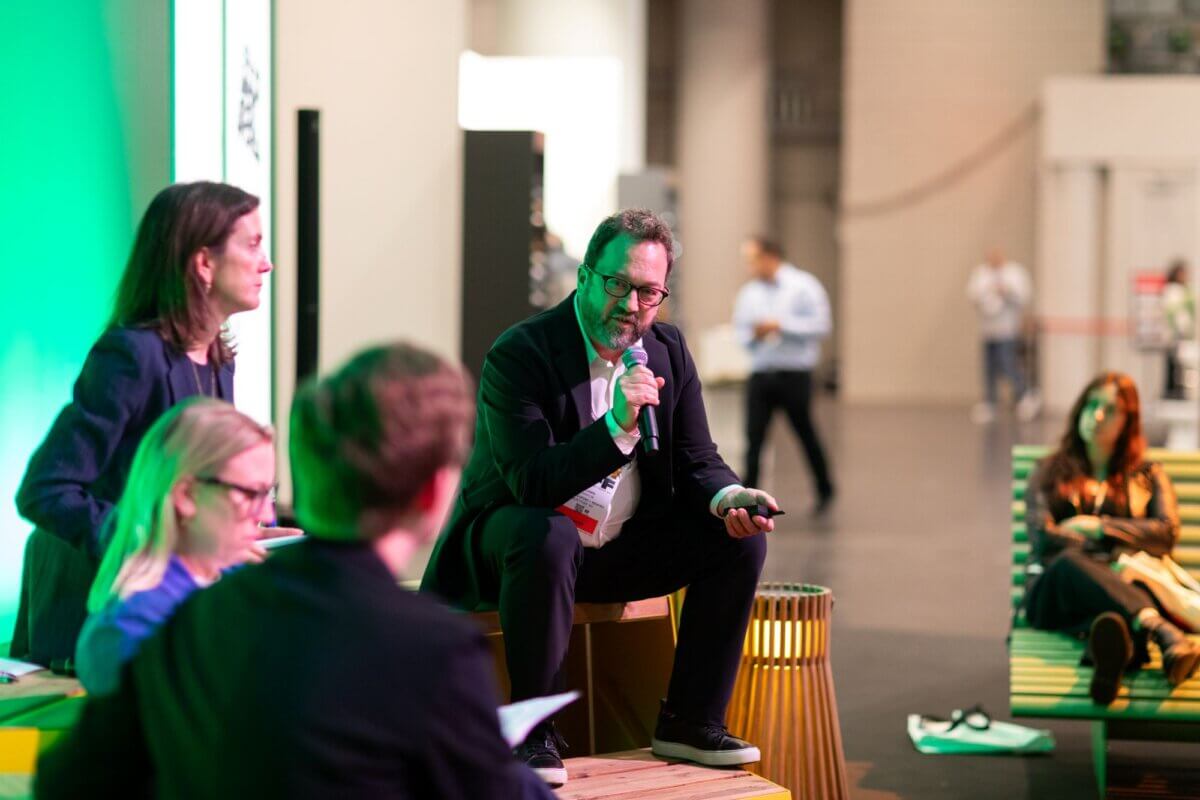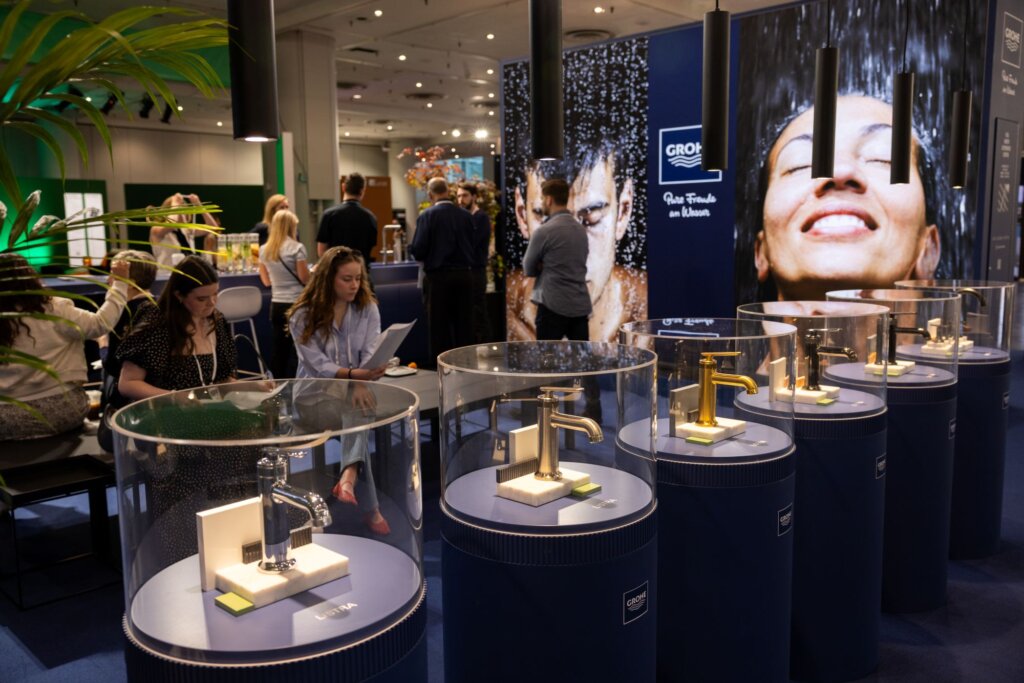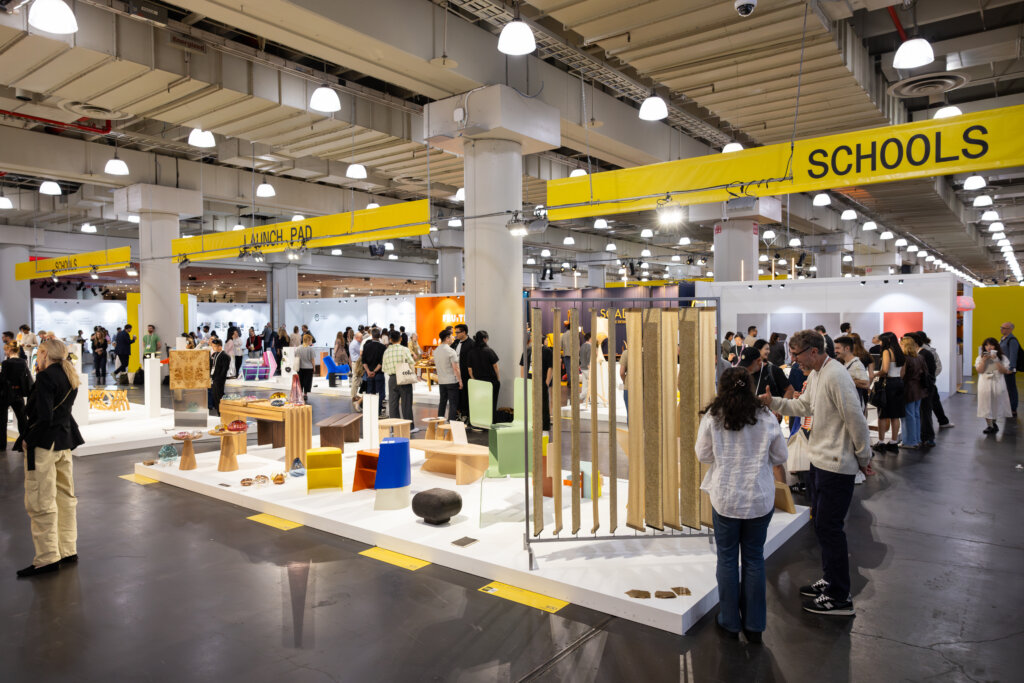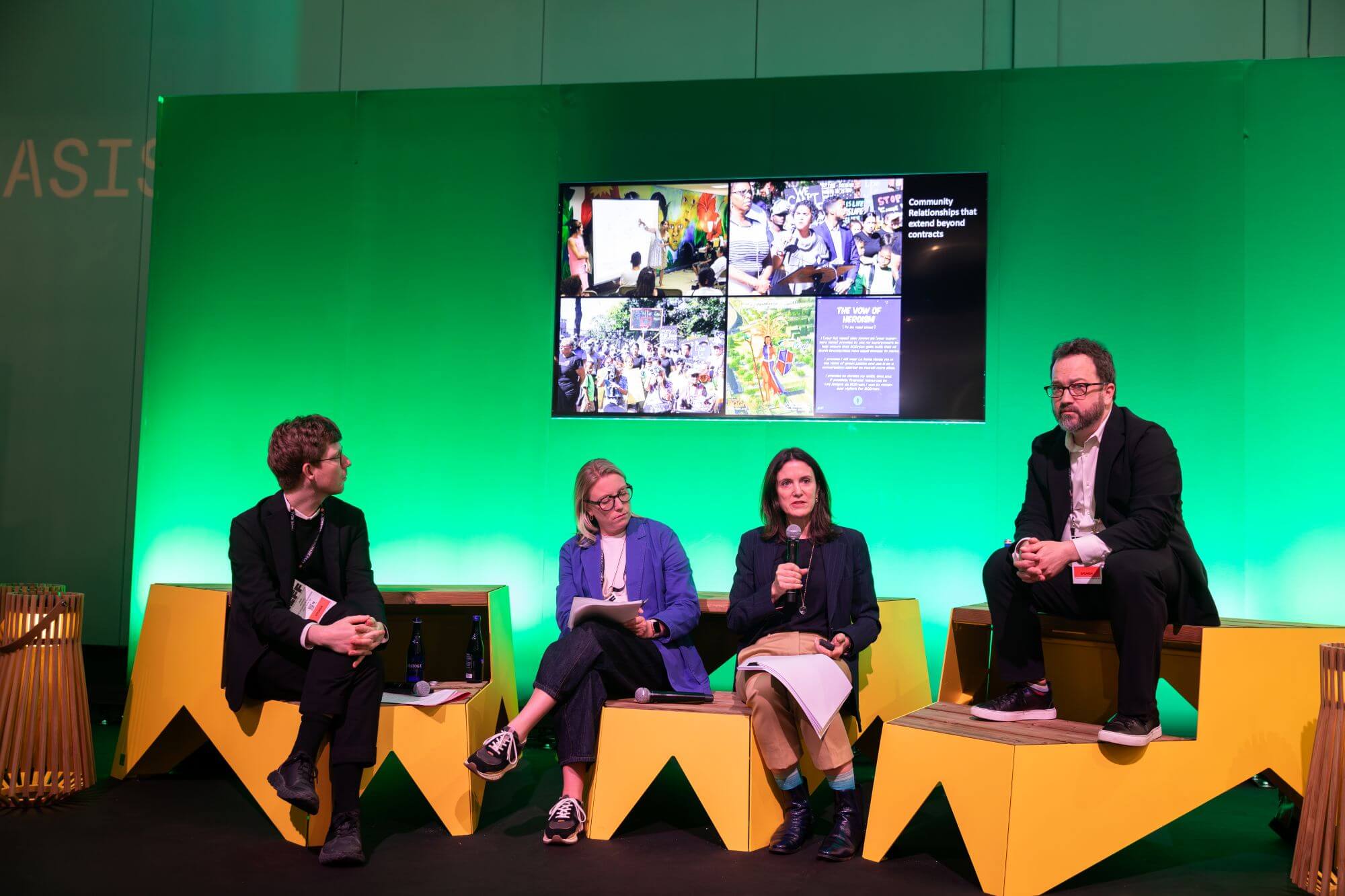
At ICFF 2025, leading voices in architecture, landscape, and design media gathered to explore how cities like New York are reimagining infrastructure as public space — shaping a more inclusive, connected, and resilient urban life.
Moderated by Jack Murphy, Executive Editor of The Architect’s Newspaper and AN Interior, the session “Designing for Public Life” brought together Benjamin Gilmartin, Partner at Diller Scofidio + Renfro (DS+R) and current AIA New York President; Susannah Drake, Principal at Sasaki and a pioneer in landscape infrastructure; and Jennifer Krichels, Editor-in-Chief of Oculus. Together, they traced how design, advocacy, and media are helping cities respond to new civic challenges — from climate resilience to social inclusion.
(Image above: Designing for Public Life Panel, from left: Jack Murphy, Jennifer Krichels, Susannah Drake, Benjamin Gilmartin (photo credit Jenna Bascom Photography))
Reclaiming the Public Realm
Opening the session, Ben Gilmartin reflected on his career-long focus on democratizing urban space — from DS+R’s transformation of Lincoln Center into a more welcoming public destination to globally influential projects like the High Line.
He emphasized how projects that began as radical experiments in reclaiming infrastructure have shaped a generation of public space design. Yet, Gilmartin noted, these interventions can also accelerate gentrification and displacement, raising critical questions about who truly benefits from redevelopment.
Today, he argued, New York faces a “search for super publics” — large-scale connective spaces that link neighborhoods, foster accessibility beyond cars, and confront pressing issues like climate change and social inequity. From 34th Avenue’s Open Streets in Queens to the East Side Coastal Resiliency Project, Rockaway Beach Resiliency, and the Reimagine Cross Bronx initiative, Gilmartin pointed to a new era of community-driven and ecologically responsive public works.
“These projects,” he said, “show that the public realm isn’t just where people gather — it’s where the city’s values are made visible.”
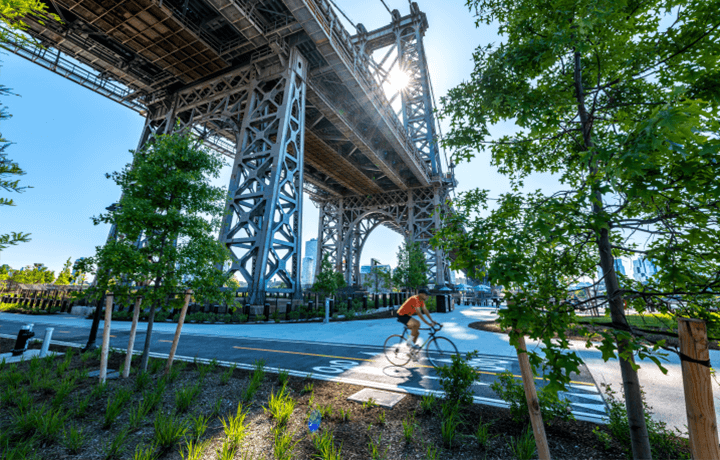
East Side Coastal Resiliency Project, image courtesy of NYC.gov and the East Side Coastal Resiliency Project
Designing Democracy: The QueensWay and Beyond
Susannah Drake built on that theme by tracing her decades of work turning neglected infrastructure into socially and ecologically productive landscapes.
Her presentation focused on the QueensWay, a 3.5-mile stretch of abandoned rail line being reborn as a linear park for one of the most diverse areas of the city. The project, developed in partnership with Trust for Public Land and Friends of the QueensWay, seeks to balance ecological preservation, community programming, and accessibility.
Drake emphasized that designing for public life means designing for democracy — a process that’s often messy, contentious, and deeply participatory. Community workshops have shaped everything from trail alignments to play spaces and lighting strategies. “The best ideas come from the people who live there,” Drake said, “and sometimes those conversations are the hardest ones.”
Her discussion also underscored how public agency standards can constrain innovation, and how pilot projects — like her Under the Elevated study — are creating toolkits to empower future designers.
Ultimately, Drake framed projects like the QueensWay not just as parks, but as acts of civic healing: reconnecting neighborhoods long divided by outdated infrastructure and preparing the city for a changing climate.
The Role of Media and Advocacy
Jennifer Krichels offered a complementary perspective — how design journalism can amplify public discourse around these transformations. As editor of Oculus, she highlighted stories that go beyond finished buildings to examine the people, policies, and processes behind them.
Her current focus: advocacy through design. She previewed an upcoming feature on all-gender restroom legislation, developed by AIA New York in collaboration with the Center for Architecture and LGBTQIA+ committees. The initiative demonstrates how design standards can advance inclusivity, safety, and efficiency in the built environment — from public parks to stadiums.
Kreichman also shared examples of smaller-scale interventions redefining urban life, including Interboro’s “Refreshing Waters” cooling stations, Grain Collective’s NYCHA Waste Yard redesigns, and the Works in Progress Collective’s “Soft Fits” project in Toronto — all illustrating how thoughtful design can restore dignity and connection in overlooked places.
“Public design,” she said, “isn’t just a civic service — it’s a cultural conversation.”
Building Consensus, Navigating Complexity
In a lively discussion, Murphy asked how designers navigate the complex network of agencies, funding mechanisms, and community voices that shape public projects.
Drake emphasized the freedom of working with nonprofits and grassroots groups, where creative ideas can be tested without bureaucratic limits. Gilmartin pointed out that New York’s fragmented system — “the alphabet soup of DOT, DDC, EDC, Parks, and more” — often hinders coordination. He proposed a bold solution: a citywide Public Realm Authority to cut across silos and prioritize livability, sustainability, and equity.
Despite the challenges, both speakers agreed that civic energy is shifting. “The most exciting projects now,” Gilmartin noted, “aren’t just happening in Manhattan, but in neighborhoods across the boroughs — from the bottom up.”
A Future Shaped by Collective Imagination
The conversation closed on an optimistic note. Drake urged designers to engage proactively with public agencies to set an agenda for the city’s next administration, while Kreichman highlighted the growing expectation among citizens for design excellence and transparency in public planning.
As Murphy summed up: “From plumbing to the palace, architects are transforming the cities where we live.”
At Designing for Public Life, the message was clear — the future of the public realm depends not only on design innovation but on collaboration, advocacy, and the courage to imagine cities as shared, equitable spaces for all.
More from ICFF:
Aqua Atelier by GROHE at ICFF 2025
Launch Pad: Where Emerging Designers Shape Their Future
